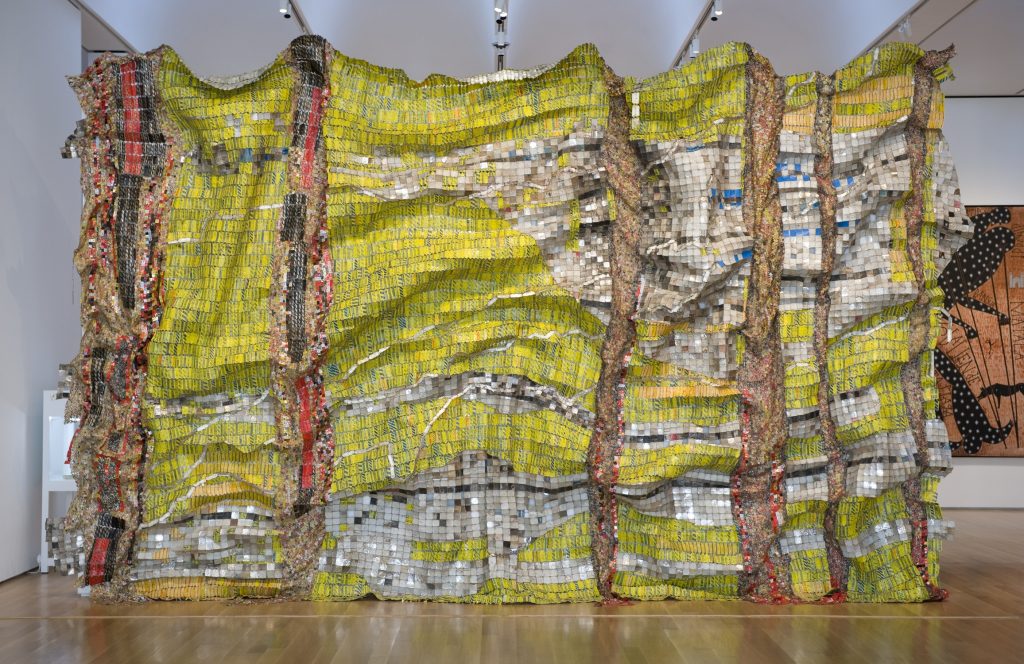Look:
Introduce El Anatsui’s Lines that Link Humanity through a guided looking activity below and then share the following information to support and build upon student observations. Say:
- Take a quiet minute to look at the artwork. After we look, each of us will share something we see or like about the artwork. I will pass a ball of yarn to the first person who shares and when they are finished, that person will pass the ball to the next person who speaks while keeping a firm hold on their piece of yarn. Hold tightly onto your yarn, and don’t let go as you listen to everyone share.
- Once sharing is done, place your yarn gently down in front of you trying to keep the path of the web the group created. We were connected through this web of yarn, and the web would have fallen if one person had let go. Our actions impact one another. El Anatsui thought about this idea while he made Lines That Link Humanity.
Share the below information with students to support and extend the connections they make during the conversation.
- El Anatsui made Lines That Link Humanity from found materials—everyday objects he found in his community. While El Anatsui’s work isn’t focused on recycling, he does want to transform the materials he finds and give them a new life.
- El Anatsui works with a team of people who help hammer the bottle caps and flatten other metals. They sew the metals together with copper wire and El Anatsui decides how these sections will be arranged in the work of art.
- When the artwork is installed, the artist encourages each museum to gather, fold, and drape the large ‘metal cloth’ as they choose.
- El Anatsui’s early work was inspired by kente cloth, a West African weaving technique originally from his home country of Ghana.
Read:
Read the following book to share the story of a woman in the Gambia who creatively repurposed materials to help her village fight their plastic waste problem.
Make:
Invite students to collect recycled or repurposed materials from the recycling bin, arrange the materials by color, and weave them into their cardboard looms. Feel free to include other more traditional weaving materials like fabric, ribbon, or wool alongside the non-traditional materials.
Teachers: make a cardboard loom for each student. Cut a 6″ x 6″ or 6″ x 9″ piece of cardboard. Make 6 equal slits (about ¼” from the edge) into the side of the cardboard.
[image]
Wrap the yarn across the cardboard and tape the tails of the yarn to the back.
[images]
Invite students to choose materials (pre-cut into strips) to weave into their cardboard loom. Encourage students to weave similar colors together, creating blocks of color like El Anatsui did in his work. Weave the materials by going over and under the yarn, alternating by starting over or under the yarn with each new material.
[images]
Once you are finished, hole punch the top of the cardboard twice and thread string or yarn through the holes to hang your finished artwork.
[images]
Extension:
- Go outside and find natural materials to weave into your loom. Try to arrange the materials by color.
- Instead of weaving, make a large-scale collaborative “drawing” inspired by Lines that Link Humanity using colorful washi or masking tape. Choose different colors of tape to explore line and pattern.
